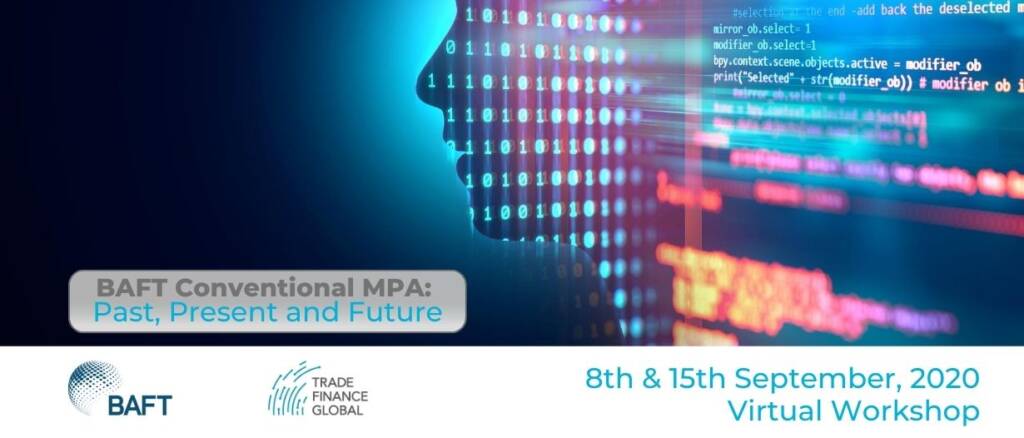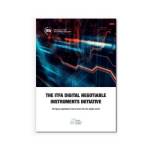Master Risk Participation Agreements In Trade Finance

Access trade, receivables and supply chain finance
We assist companies to access trade and receivables finance through our relationships with 270+ banks, funds and alternative finance houses.
Get StartedContents
Trade finance plays a key role in facilitating global trade, making it possible for exporters and importers to carry out business. Trade finance uses specific instruments which facilitate international trade. Risk participation is one of those trade finance mechanisms that financial institutions use when working with importers and exporters, to ensure that the international trade cycle continues uninterrupted.
What is Risk Participation?
Risk participation is a type of a lending transaction in which a lender, bank or financial institution transfers its interest in a loan or exposure, or risk associated with that loan to another financial institution. The transfer of this risk is done by way of a Master (Risk) Participation Agreement which is executed between the lender and the institution to whom the risk is being transferred to, usually referred to as the participant. Risk participation is used by lenders to reduce their exposure to risks that are associated with the loan, for example bankruptcy by the borrower or seizure of the borrower’s assets.
How does Risk Participation work?
Risk participation agreements are mostly used in international trade to facilitate financing agreements between a lender and a borrower. In risk participation, the lender sells an economic interest in the loan agreements to a participant, which allows the participant to be entitled to an economic benefit accruing out of the lending arrangement between the lender and a borrower. The participant is entitled to certain benefits such as receiving payment on the principal amount and interest and other loan fees from the loan advanced to a borrower by a lender. The participant’s obligation in participation will be to fund the loan on behalf of the originating lender on the terms of the master risk participation agreement and as required under the loan agreement between the original lender and borrower.
In many participation agreements, the originating lender’s interest in the loan is sold outright to the participant. Therefore, the originating lender does not become an agent, trustee, or fiduciary of the participant. The Master Risk Participation agreement should expressly indicate that the lender and participant’s relationship is that of a buyer and seller in order to avoid a situation where a principal-agent relationship could be implied. In a participation agreement, the intention of the parties is to transfer all the economic rights from the originating lender to the participant without creating a fiduciary or agent relationship between them.
Master Risk Participation Agreement (MRPA)
A Master Risk Participation Agreement (MRPA) is the legal agreement executed between a lender and a participant. This is the agreement that defines the rights, duties and obligations of the originating lender and the participant. The agreement will also define the participant’s rights between the participant and the originating lender, including the participant’s rights to make decisions or give the lender instructions or directions regarding the loan between the lender and the borrower.
Risk Participation vs Loan Syndication
Much as the terms “participation” and “syndication” are commonly used interchangeably, it should be noted that there are significant differences, legally and structurally, between risk participations and syndicated loans. The difference between risk participation and syndicated loans lies in the lending structures used in the two financing agreements.
As mentioned above, in risk participation agreements, the originating lender’s interest in the loan is outrightly sold outright to the participant. In risk participation, the lender sells an economic interest in the loan agreements to a participant which allows the participant to be entitled to an economic benefit accruing out of the lending arrangement between the lender and a borrower.
In loan syndication on the other hand, a borrower enters into one single credit agreement with a group of lenders. This single credit agreement covers all of the loan facilities provided by the various lenders to the borrower. Each of the lenders in a syndicated loan has a direct legal and contractual relationship with the borrower.
However, in most cases, one of the lenders can act as an agent on behalf of the various lenders who have advanced a loan to the borrower. Sometimes, there can be more than one agent each serving a specific role in the loan agreement, for example, one agent could be tasked with administrative functions relating to the loan facility and another agent would be tasked with the duty of securitisation of the loan and taking collateral on behalf of the other lenders. Usually, in a syndicated loan, the administrative agent will be tasked with administering the loan on behalf of the other lenders with roles including handling communications between the borrower and the lenders, and disbursement of the loan to the borrower.
In a syndicated loan, the rights, duties, and obligations of the borrower and the lenders will usually be governed by a syndicated loan agreement whereas in a risk participation transaction, the rights and obligations of the lender and the participant will be governed by the Master Risk Participation Agreement.
Types of Risk Participation
There are two main types of risk participations and these are the unfunded risk participation and the funded risk participation.
- Unfunded risk participation
Unfunded participation is one whereby the participant does not fund the borrower until the originating lender demands or instructs the participant to make a payment to the borrower.
- Funded risk participation
In funded risk participation, it is agreed that the participant will fund the originating lender so that the lender can fulfill its obligations under a drawdown request made under the credit agreement between the borrower and the originating lender. The originating lender will then sell its interest in the loan to the participant.
Versions of the Master Participation Agreement
There are several versions of a master participation agreement. The most common versions are the BAFT Master Participation Agreement which is based on English Law, and the International Trade and Forfaiting Association (ITFA) Master Participation Agreement which is based on New York law.
These versions of the master participation agreements have been created as industry-standard documents that will be used by banks to facilitate the buying and selling of country and bank trade-related risk. These agreements are meant to simplify the exchange of documentation between banks and reduce legal costs by minimizing redundancies
BAFT Master Participation Agreement (English Law)
The original BAFT master participation agreement was launched in 2008. It is based on English law and was meant to be the industry standard document for transactions to facilitate the buying and selling of trade finance-related assets globally. The Bankers’ Association for Finance and Trade (BAFT) was founded in 1921 and is an international financial trade association serving the global financial community. Its membership is made up of international financial institutions and companies that are actively involved in global and trade finance.
The 2008 BAFT master participation agreement was updated in 2018 to bring about more standardisation in trade transactions and also update it, to make it relevant to the modern-day requirements of the trade finance industry.
The revised master participation agreement has maintained many of the 2008 provisions but has also included amended and new provisions to reflect significant developments in industry practice as well as changes in the global regulatory landscape that have happened since 2008.
Some of the changes introduced in the 2018 updated BAFT master participation agreement include:
Provision for true sale
The 2018 updated master risk participation agreement now allows for true sale which means that there can be a transfer of financial assets as opposed to the transfer of liability from one party to another. The grantor as provided for under the 2008 master participation agreement is now referred to as the seller.
Removal of optionality
The revised 2018 master participation agreement has removed the optionality choice contained in the 2008 agreement, therefore, limiting institutions from modifying the agreement. The master participation agreement must now be used in its entirety as an industry standard.
Multi-party documentation
The 2018 updated master participation agreement has introduced the concept of multi-parties where there can now be two master parties in the agreement.
International Trade and Forfaiting Association (ITFA) Master Participation Agreement
The International Trade and Forfaiting Association (ITFA) was founded in 1999 as an association of banks and financial institutions which are in the business of originating and distributing trade-related risk in finance transactions. ITFA initially published the New York master participation agreement in 2009, which has now been updated in 2019. The updated New York Master Participation Agreement for Unfunded Participations mirrors the updated English law 2018 BAFT master participation agreement.
The updated New York master participation agreement is intended to standardise the documentation used in trade finance transactions. This ensures that banks, bank clients, government bodies and investors understand and better utilise trade finance assets.
The updated New York ITFA master participation agreement is aimed at industry players who intend to take in part in unfunded risk participations only. The industry players targeted by this agreement include insurance companies. The master agreement also provides for participation in transactions and facilities like guarantee facilities, finance facilities or receivables purchase in which the participant outrightly buys a share in all single instruments issued under such a facility.
Scope of Application of Master Risk Participation Agreements
There are various uses of master participation agreements which are mostly in the realm of trade financing. Some of these uses are discussed below:
Forfaiting
Forfaiting, also known as trade forfaiting, is a way of raising cash in trade finance whereby exporters obtain cash by selling their foreign accounts receivables (medium and long-term) at a discount and on a “without recourse” basis. Without recourse or non-recourse basically means that the forfaiter assumes and accepts the risk of non-payment.
In this case, a forfaiter is a specialised financial institution or a bank department that performs non-recourse export financing by purchasing the medium and long-term trade receivables of an exporter. A master risk participation agreement may be used in this case to transfer the interests of a lender in the trade receivables of a borrower to a participant. In forfaiting, the receivables of a borrower are normally guaranteed by the participant, which is the importer’s bank.
Letters of Credit
A letter of credit is a credit instrument which acts as a commitment by a bank on behalf of an importer that payment will be made to the exporter once the terms and conditions contained in the letter of credit have been met. A letter of credit is issued on behalf of an importer for the benefit of an exporter which allows the exporter to draw a specified sum of money as payment for goods exported. Letters of credit are a classic form of trade financing and are usually issued by banks to guarantee payment. A letter of credit replaces the buyer’s risk with the risk of the issuing bank. The issuing bank or lender can sell its interest in the credit facility issued under the letter of credit to a participant by way of a master participation agreement.
Guarantee reinsurance
A guarantee is used for financing imports and is a perfect tool to protect importers and exporters in international trade. A guarantee provides a promise of performance and payment to an exporter in international trade. A lender who has issued a bank guarantee to a borrower may sell its interests in that credit facility to a participant and the transfer of this interest will be secured by a master participation agreement. Guarantees will mostly be used in unfunded risk participations.
Export credit insurance financing
Export credit insurance financing is an insurance credit facility issued by a lender to an exporter that is meant to protect the exporter from the risk of non-payment by a foreign importer. Export credit insurance can be short term or long term. This financing facility can be transferred to a participant by a master participation agreement.
Bank acceptance draft discounting
A bank acceptance draft is a draft requiring the bank to pay the holder of the draft a specified amount on a specified date. A bank acceptance draft is usually used for international trade as a mode of ensuring payment. It guarantees the establishment and performance of a contract between the importer and an exporter. It is usually issued at a discount and then paid in full when its payment date becomes due. This bank acceptance draft can be transferred to the participating institutions by way of a master participation agreement.
Benefits of Risk Participation
One of the benefits of risk participation is that it allows financial institutions like banks to reduce their exposure to risks. By outrightly selling the interest in a loan to the participant, the lender reduces his exposure to any risks that may befall the borrower, like default in repayment of the loan.
By selling the risk participation, the lender reduces its credit risk in the loan while adding another source of financing for the borrower in the event that the borrower requires additional funding. Also, the sale of the originating lender’s interest allows the lender to release new capital while allowing the lender to use the sale proceeds in new lending opportunities.
Also, loan participations can create value for the originating lender, particularly in a situation where the borrower is distressed. This value is created by creating a market to sell the beneficial interest in the loan between the lender and borrower while allowing the lender to remain the record owner of the loan. This is important for the lender in maintaining a relationship with its client.
Lenders and traders ought to understand how risk participation works in order to fully exploit this trade finance mechanism to their benefit. Understanding risk participating as a trader can immensely open up financing opportunities to enable a trader seamlessly to engage in international trade.
Related Event: BAFT Master Participation Agreement (MPA) Virtual Workshop

- International Trade Law Resources
- All International Trade Law Topics
- Podcasts
- Videos
- Conferences















